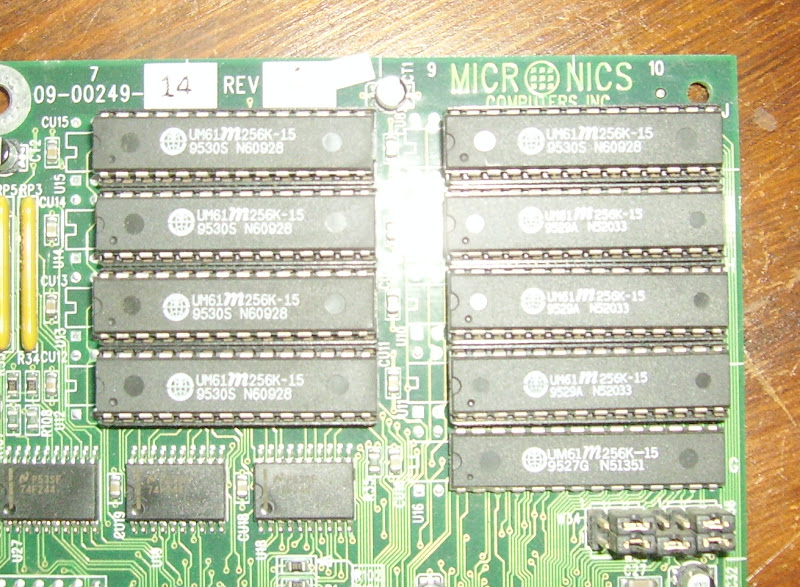retro games 100 wrote:Thanks for the info! I can check the cache chips immediately. They are, perhaps unfortunately, all labelled -15. There are 5 […]
Show full quote
Thanks for the info! I can check the cache chips immediately. They are, perhaps unfortunately, all labelled -15. There are 5 chips in total. 1 chip looks smaller than the other 4. Something about the info on the chips intrigues me. Here is the information:
UM61 M 256k-15 (smaller chip)
9602D RB0105
HM62H512BK-15 (same identification for all 4 chips)
9637B L69B1 (same id as chip 3)
HM62H512BK-15
9638B L69I2 (same id as chip 4)
HM62H512BK-15
9637B L69B1
HM62H512BK-15
9638B L69I2
Firstly, sorry for my ignorance, but is this 512K cache? If it is, then I need to set the mobo's cache jumpers from 256K to 512K! Also, do I add another stick of RAM, to increase the RAM size from 32MB to 64MB?
Secondly, I wonder why cache chip numbers 1 and 3 are the same, and cache chips numbers 2 and 4 are the same? Thanks a lot for any additional info.
I've downloaded almost everything here:
Link: http://www.chipmunk.nl/DRAM/DRAM.htm
It may help in deciphering what those numbers are!
Also, theres a second (and VERY easy) way to check if your cache chips are 32k or bigger (64k / 128k).
On boards with 256k total I noticed all 9 chips are of the same size. If you, for instance, have 256k in 5 chips (1 as big as the 32k should be, and 4 which have 4 pins more, 2 on each side) then you have 4 64k chips.
My point is, cache chips larger then 32k each are larger. You'll have to check the exact numbers to differentiate 64k chips from 128k chips though.
For example;if you look at my pic with the 9 mobo's again:
Link: http://i941.photobucket.com/albums/ad254/inte … um/DSC00201.jpg
, the middle one has 5 chips in total, of which 4 are larger (have 4 more pins, 32 instead of 28 iirc) and is jumpered for 256k total memory.
Also many of the boards have 9 cache chips in total with all sockets populated, but many of those sockets are larger then the chips that are placed there.
Just by looking at your pic I can tell it has 1 28 pin chip and 4 32 pin, so you have either 256k or 512k total L2 😉
Mine has the smaller ones, alas 😜
Edit: Your numbers aren't on the link I posted but judging from the numbers myself I'd say your mobo is jumpered correctly
1st chip:
UM61 M 256k-15
other chips:
HM62H512BK-15
so twice as large in memory size.
So your total amount of cache should be 64k x 4 = 256k 😉

